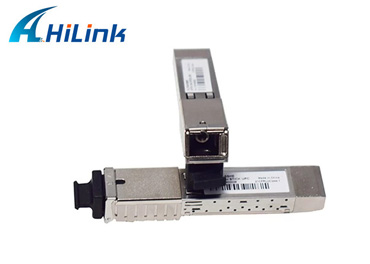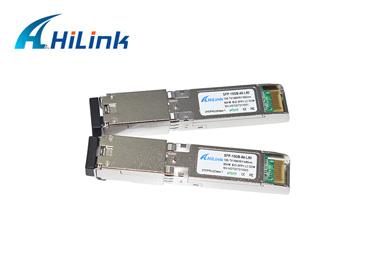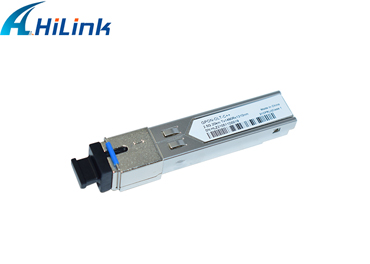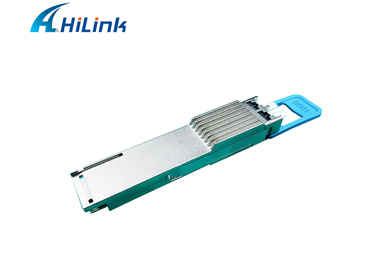How Do I Use A Compatible SFP Module?
Aug. 22, 2022
As fibre optic technology has evolved, a large number of compatible SFP transceiver modules have found their way into data centres. However, there are still some doubts and concerns about the compatibility and interoperability of SFP transceiver modules. Therefore, here is a comprehensive overview of SFP compatibility and how to check it.
What is SFP compatibility?
To understand SFP compatibility we would do well to first understand the Multi-Source Agreement (MSA), an agreement between many different transceiver manufacturers to make standardised products. SFP is not standardised by an official standard but specified by the MSA. It defines the SFP module, including dimensions, connectors and signalling, to ensure that the SFP module is compatible with branded SFP devices. other optical transceivers such as SFP+, XFP, QSFP, etc. also have MSA standards. SFP transceivers that meet SFP compatibility requirements are typically compatible with hardware from a range of telecom suppliers, so users can mix and match components from different suppliers. In general, an SFP is qualified for SFP compatibility if it connects correctly to cables and switches and helps the device to operate successfully as you want it to.
GPON ONU STICK SFP WITH MAC
Why do you need a compatible SFP?
Of course, apart from the high price, using an official SFP module is a really good option. And for consumers, the cost is usually an important, if not the primary, factor when purchasing certain items. Using an official SFP module means that you have to pay more money than for a compatible SFP.
What's more, some suppliers do not declare whether the SFP slots on their devices are compatible with standard SFPs from other suppliers. This can cause problems for users when their equipment is unable to communicate with SFPs purchased from other suppliers.
Compatible SFPs are also standard products as long as they comply with MSA standards. It is functionally identical to the official hardware and is compatible with equipment from different telecom vendors. So using a compatible SFP means you can save a lot of money and don't have to worry about your equipment and SFPs coming from different suppliers.
10G 1490NM/1550NM 80KM BIDI SFP+
How do I use a compatible SFP module?
You may find that a compatible SFP transceiver does not work successfully in a branded switch. This is usually not caused by a defective compatible SFP transceiver, but by improper behaviour. Here are a few guidelines for you to use compatible SFP modules correctly.
Check your transceiver modules and device ports
Some transceiver modules can easily be mixed up because they look similar. For example, SFP and SFP+. SFP offers 1Gbps data and SFP+ supports data rates of up to 10Gbps. SFP modules with the same dimensions can be seamlessly installed into SFP+ ports on the switch and vice versa. If SFP+ modules are plugged into SFP ports, they will still work but will be limited to 1 Gbps. conversely, there will be no connection when SFP modules are plugged into SFP+ ports.
Ensure SFP modules have the same wavelength at both ends
We all know that SFP modules are used for data transmission. The transmission process involves converting an electrical signal on one side to an optical signal, and then the light is transmitted through the fibre to the other end of the SFP module where it can be converted to an electrical signal. To ensure this process, the SFP modules at both ends should have the same wavelength. It is therefore a good idea for you to check the specifications of the SFP module carefully.
GPON OLT SFP C++
Choosing the right type of fibre
Choosing the correct fibre type is also a major factor in ensuring SFP compatibility. Therefore, you must verify the fibres at both ends of the SFP module, which should be of the same type. The standardised colours on the outer sheath of the fibres will help you to identify them. More importantly, remember to use the appropriate fibre optic cable.
Ensure that both ports are compatible with the SFP module
It is important that the port on your device accepts the SFP module you want to use. As mentioned above, some brands of SFP modules are not compatible with SFP modules from other suppliers. Even if you use a compatible SFP module, it is best to check the standard of the port first.
How can I guarantee the compatibility of my optical transceiver?
The first requirement for an optical transceiver to work perfectly on a network switch is compatibility. Some industry vendors encrypt their devices, which can make module compatibility more difficult. To ensure that third party transceivers will work on OEM switches, it is vital to choose a reliable supplier with a rigorous transceiver testing system.
QSFP28 100G DWDM Transceiver
A well-developed test system
The test system can be broadly divided into two parts: testing of semi-finished modules and testing of finished modules. The former can be further divided into basic cosmetic testing (accessories, packaging, process, etc.) and parametric performance testing. The latter has various test items such as optical power test, spectral test, eye diagram test, digital diagnostic function test, high and low-temperature test, etc. The finished modules will be subjected to an external double check and DDM switch connection tests, compatibility and connectivity results. For compatibility testing, compatible modules will be tested on OEM switches. Thus, a series of rigorous tests on compatible transceivers will ensure perfect operation on devices such as switches.
Trusted third-party suppliers
How are third-party suppliers evaluated? First, the overall qualification is assessed. A reliable third-party compatibility provider requires investment in comprehensive equipment such as switches and servers, the capability of a test environment, experienced staff and full documentation of test parameters and results. In addition, compatibility issues can cause problems for many users. Maintenance and other after-sales services are therefore vital. A dedicated team of staff is also needed to answer technical enquiries if problems arise with the compatibility module.
Conclusion
SFP compatibility is key to your choice of network equipment in the market. As a trusted specialist, Hilink can ensure SFP compatibility and performance. It offers SFP transceivers that are compatible with almost all brands. If you have any requirements, please visit https://www.hilinktech.com.















